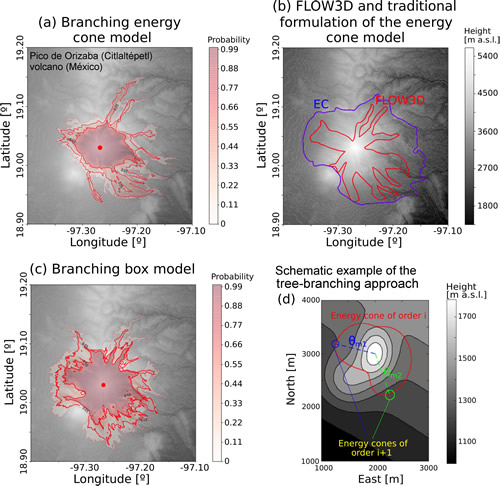Tree-Branching-Based Enhancement of Kinetic Energ y Models for Reproducing Channelization Processes of Pyroclastic Density Currents

Aravena A., R. Cioni, A. Bevilacqua, M. de’ Michieli Vitturi, T. Esposti Ongaro and A. Neri (2020).
Journal of Geophysical Research: Solid Earth, doi: 10.1029/2019JB019271.
Abstract
Kinetic energy models, also called kinetic models, are simple tools able to provide a fast estimate of the inundation area of pyroclastic density currents (PDCs). They are based on the calculation of the PDC front kinetic energy as a function of the distance from a source point. On a three-dimensional topography, the PDC runout distance is estimated by comparing the flow kinetic energy with the potential energy associated with the topographic obstacles encountered by the PDC. Since kinetic models do not consider the occurrence of channelization processes, the modeled inundation areas can be significantly different from those observed in real deposits. To address this point, we present a new strategy that allows improving kinetic models by considering flow channelization processes, and consists in the inclusion of secondary source points in the expected channelization zones, adopting a tree branch-like structure. This strategy is based on the redistribution of a key physical variable, such as the flow energy or mass depending on the considered kinetic model, and requires the adoption of appropriate equations for setting the characteristics of the secondary sources. Two models were modified by applying this strategy: the energy cone and the box model. We tested these branching models by comparing their results with those derived from their traditional formulations and from a two-dimensional depth-averaged model, considering two specific volcanoes (Chaitén and Citlaltépetl). Thereby, we show the capability of this strategy of improving the accuracy of kinetic models and considering flow channelization processes without including additional, unconstrained input parameters.


Devi effettuare l'accesso per postare un commento.